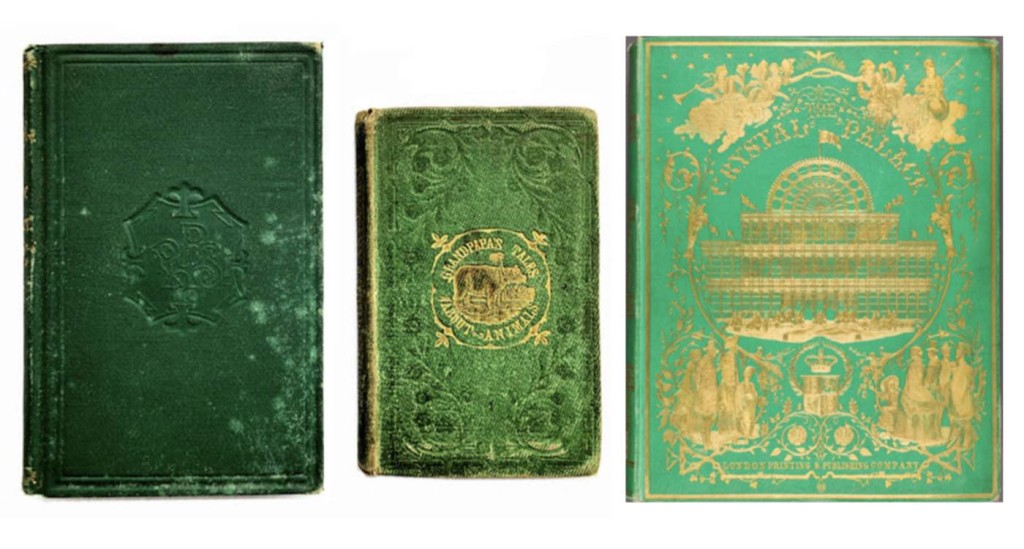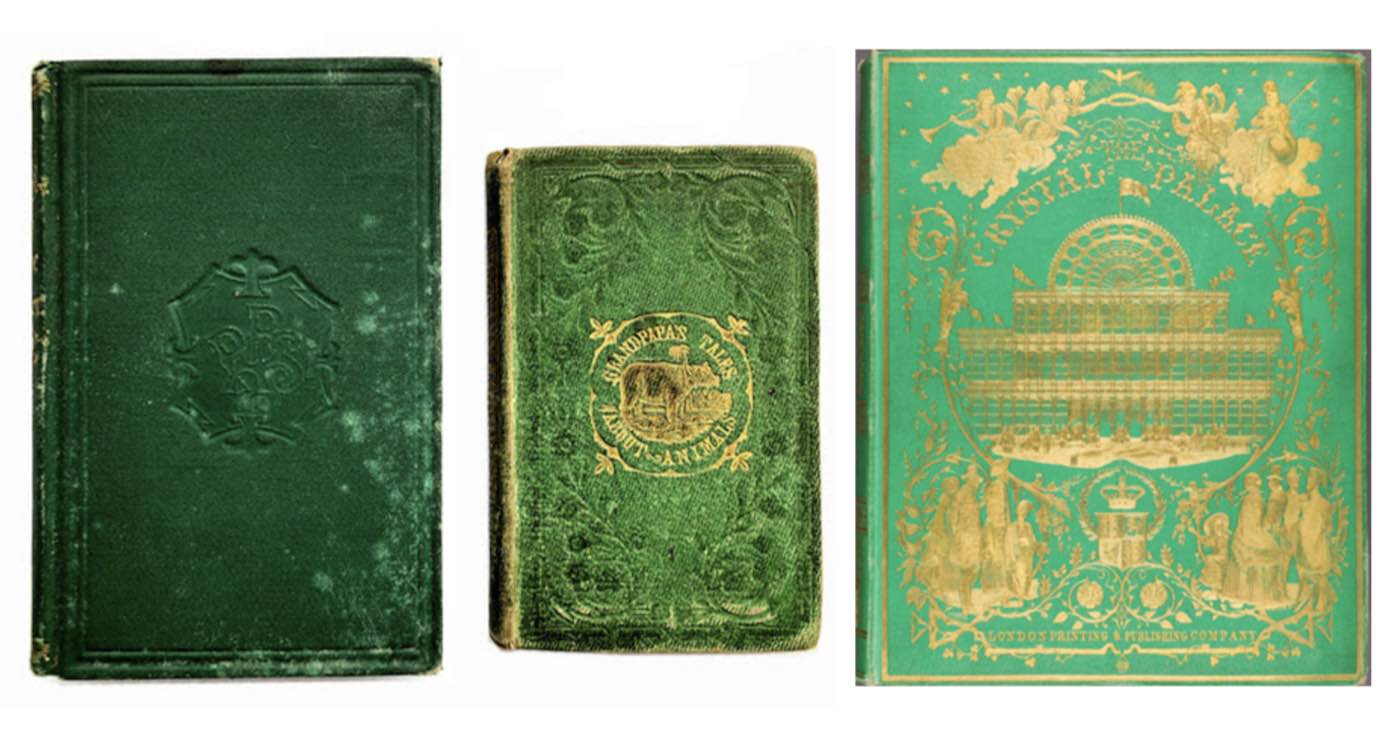
There are poisonous books—the Communist Manifesto, or Mein Kampf for example—and then there are books that are literally poisonous.
Covered in vibrant green bookcloth, hundreds of 19th-century volumes are actually laced with a toxic pigment, and one researcher who’s used to creating databases of volumes for research, has instead created one as a public health service; aptly named the Poison Book Project.
Emerald green, also known as Paris green, Vienna green, and Schweinfurt green, is the product of combining copper acetate with arsenic trioxide—yes, that arsenic.
Arsenic can cause permanent organ damage and death in the worst of cases, but even minimal exposure can cause fatigue, cramps, and diarrhea as your body works to purge the heavy metal.
“The toxic pigment was commercially developed in 1814 by the Wilhelm Dye and White Lead Company in Schweinfurt, Germany,” reports National Geographic. “It was used everywhere, from clothing and wallpaper to fake flowers and paint.”
But arsenic was just the start, as Poison Book Project explains.
Over 50% of the 19th-century, cloth-case bindings analyzed for this project to date contain lead in the bookcloth, across a range of colors. Analysis of a range of bookcloth colors has identified… the following highly toxic heavy metals: arsenic, chromium, lead, and mercury.”
Volumes used to be bound in leather until bookcloth became a more affordable substitute. The bookcloth also meant that publishers could use dyes and more heavy pigments to color the exteriors.
MORE RELATED HEALTH NEWS: Acres of Toxic Chemicals and Rusting Cars Becomes National Park After Amazing Transformation
One such emerald green book, Rustic Adornments for Homes and Taste, was the subject of examination by Melissa Tedone at the Winterthur Museum, Garden & Library in Delaware, and founder of Poison Books Project.
Examining the volume, she found a black excretion on the damaged part of the 162-year-old cover, which led her to a laboratory for testing. She discovered the substance was a mix of copper and arsenic, with the latter averaging a concentration of 1.42 milligrams of arsenic per square centimeter.
MORE ANTIQUES NEWS: Stolen 22 Years Ago, Two Priceless Charles Darwin Notebooks Mysteriously Returned in Pink Gift Bag
That’s 1.4% of a lethal dose for an adult. However, the risk is essentially limited to those who would handle books like these regularly—such as conservationists, librarians, literature professors working in historic libraries, or museum curators, for whom Poison Books Project has important safefty information.
But the next time you think to buy a shiny blue, red, or especially green set of antique books, make sure you stop by the pharmacy for some latex gloves before hand.
SHARE This Public Health Service Announcement On Social Media…





















@PortiaRossi – LOL, I was wondering if anyone else would get The Magicians reference!! 😹 Yeah, I was gutted at what happened to poor Penny. 😿 Have you seen the whole show? I’m going to get to the books next. 😻
@PortiaRossi – Except for some strange reason, the Wiki for the show refers to it as the Poison _World_ rather than the Poison Room? Anyway, my question is this: if those books in question are so terrifyingly powerful that absolutely _nobody_ should be able to access them, why do they even bother to keep them in existence? Why not simply destroy them? I’m not sure what the point of keeping them in a poisonous room is. If someone is _that_ determined to get their hands on a particular book in the Poison Room, they are surely gonna do it (and they did – to their severe detriment!).